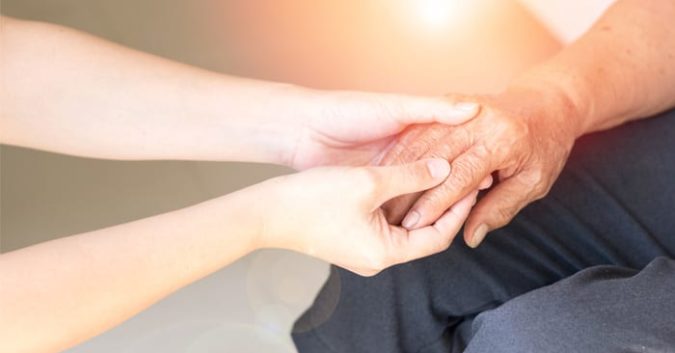June is Elder Abuse Awareness Month, a time to raise awareness about the kinds of abuse and neglect that happen in home care and nursing home settings. The effects of elder abuse are lasting and tragic, since abused individuals have a 300 percent higher death rate than those who have not been abused.
Nationwide the statistics are upsetting: 1 in 10 people over the age of 60 have experienced elder abuse, but only 1 in 14 cases are reported. By knowing the signs of abuse and making sure elderly people do not feel socially isolated, we can all help protect some of our most valued and vulnerable citizens.
Elder Abuse Epidemic
According to some statistics, abuse may happen in as many as 30 percent of nursing homes. The most disturbing reports include incidents of residents being choked, hit, slapped, or kicked by staff or other residents. Elderly individuals may also be sexually abused during personal care, such as when they are being bathed or dressed.
But abuse isn’t limited to physical contact. It includes emotional abuse and humiliation, such as name-calling and other degrading practices. Some nursing home care providers have posted demeaning photos of residents on social media, including images of individuals not wearing clothing, people who had recently passed away, or residents who were being abused.
Another disturbing trend is the growth of financial abuse of elderly people, whose funds can easily be tapped by care providers. Older individuals may have money stolen from retirement funds and credit cards, which can result in tens of thousands of dollars in losses, as well as a heartbreaking sense of feeling betrayed by people they trusted.
Abuse can also take the form of confining someone without a medical reason, or neglecting them through failing to provide care, food, and medical attention. One of the problems in preventing these acts is that nursing home attendants may witness but not report such incidents. There is a shortage of qualified people to work in nursing homes because they are paid low wages for physically and emotionally difficult work. But this may be yet another case of companies putting profits ahead of people.
Money Matters
Around two-thirds of nursing homes are for-profit operations, which makes it all too easy for those in charge to cut costs in favor of raising the bottom line. Limiting the number of attendants and how much they are paid seriously harms the quality of care that our elders receive.
One example of how short staffing may lead to abuse is the number of people in nursing homes who have been given antipsychotic drugs as a means of “chemical restraint.” These medications have a FDA “black box warning” that states they should not be prescribed to people who are elderly or have dementia, since that can result in early death. But when nursing homes want to cut corners, some would rather sedate patients and endanger their lives rather than provide good care.
Spotting and Preventing Abuse
When elderly people are being financially or physically abused, they may not report it because they do not want their family member or care provider to face legal penalties. Victims of elder abuse may have also been threatened by their abuser with either physical harm or a refusal to give them medications or food, if they report the abuse. In these circumstances, elderly people living at home or in nursing homes may feel like there is nowhere to turn.
The fact that victims often can’t report abuse makes it even more important for friends and family members to know the different kinds of elder abuse and to be able to spot the signs. Some physical indicators can include bed sores, poor personal care and hygiene, and weight loss or other signs of malnutrition.
If an elderly person is being emotionally abused, they may seem depressed and withdrawn, or unwilling to talk about certain subjects. Financial abuse can be more difficult to spot, but family members can be alert for strange credit card or bank account activity, or having a new co-signer on an account.
As with many types of abuse, awareness is key to prevention. To protect elderly loved ones who are in nursing homes or in-home care situations, it is important to maintain close ties and to look for these signs of abuse. This month, as every month, our elderly family members and friends must know that they are not alone, and that there are always people they can turn to for help out of an abusive situation.
